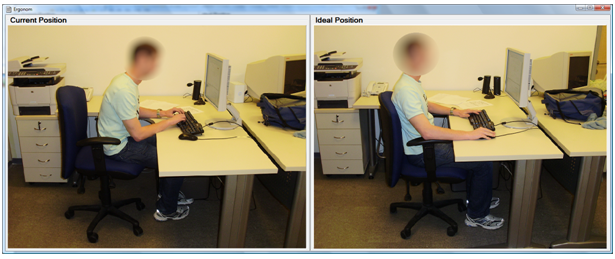A multi-disciplinary team at BGU has demonstrated the utility of a new training method using self-modeling webcam photos to reduce the risk of musculoskeletal disorders among workers using computers for the bulk of their working hours.
In an article entitled “The effectiveness of a training method using self-modeling webcam photos for reducing musculoskeletal risk among office workers using computers” to appear in the forthcoming issue of the Journal Applied Ergonomics, Dr. Meirav Taieb-Maimon and Prof. Bracha Shapira from the Department of Information Systems Engineering, Prof. Julie Cwikel of the Center for Women’s Health Studies and Promotion, Dr. Ella Kordish from Occupational Health and Epidemiology and Dr. Naftali Liebermann from Orthopedic Surgery at Soroka University Medical Center, together with students, Ido Orenstein, Dudi Ben Shimon and Denis Klimov outline their advance.
The pop-up photos showed the worker the ideal working posture compared with his current working posture as a reminder to sit in a more ergonomically sound fashion. This study was funded by a grant from the Ministry of Industry, Trade and Labor to support the incorporation of video and computer-based technology to address occupational health problems.
The researchers conducted an experiment with 60 university and hospital workers who work at computer terminals and the results showed that the webcam pop-up photos were a more effective method of training than conventional ergonomic training. Both interventions had a greater effect on older workers and those who already suffering musculoskeletal pain. The photo-training method had a greater positive effect on women workers than men and the changes were sustained over time.
“Our innovative intervention using photo-training combines conventional ergonomic training with an automatic visual feedback system” explains Dr. Taieb-Maimon. “The system provides the worker with continual feedback on their working habits using their own photos that pop-up on their personal computer screen. This gives real time feedback on their working posture as they contrast the photo of their current sitting style with the photo of themselves sitting in the recommended ergonomically-correct position that they were taught at the beginning of the experiment. Both types of training were effective (traditional and photo-training) provided short term posture improvement; however sustained improvement was only attained with the photo training method”.

 Webcam.ppt
Webcam.ppt
